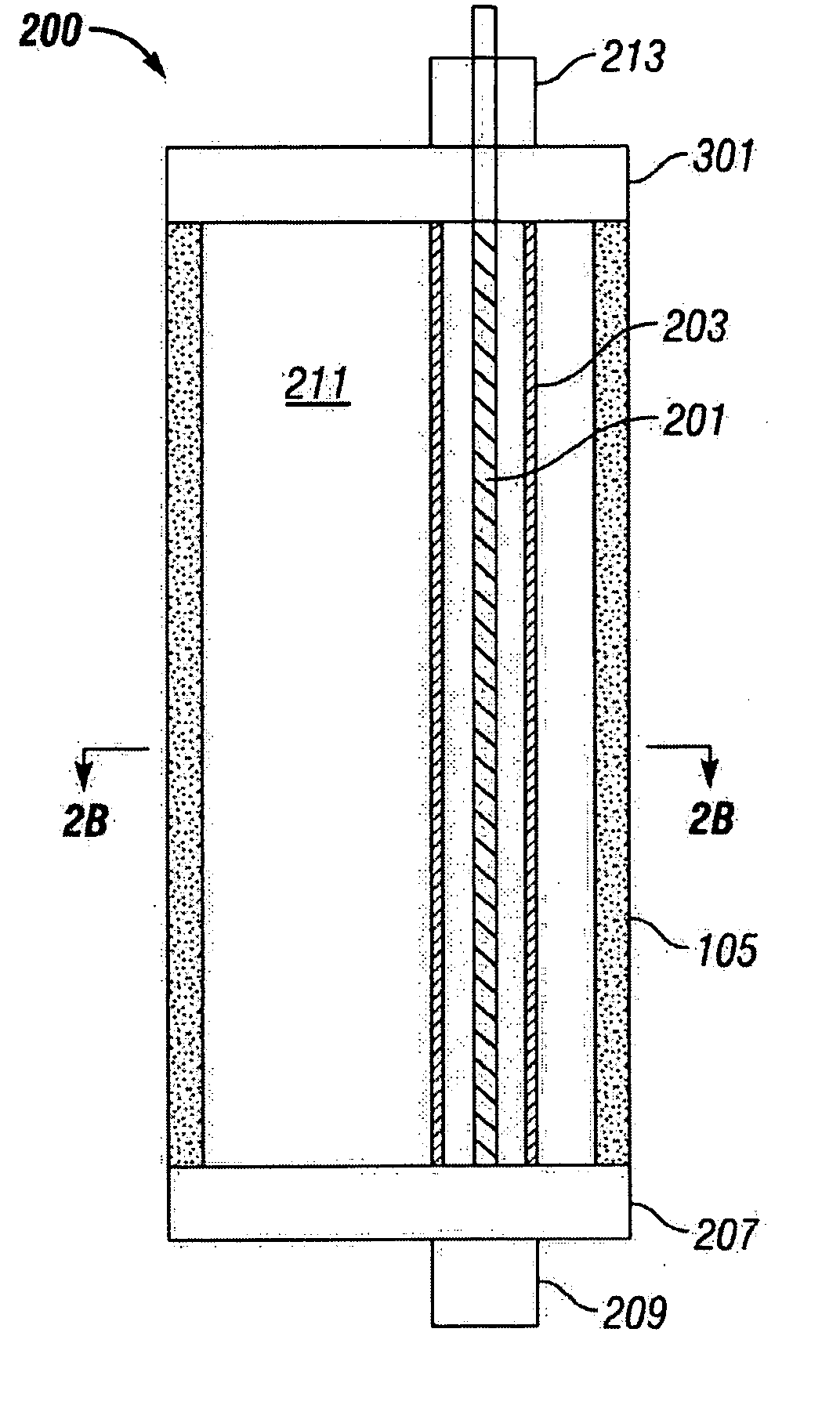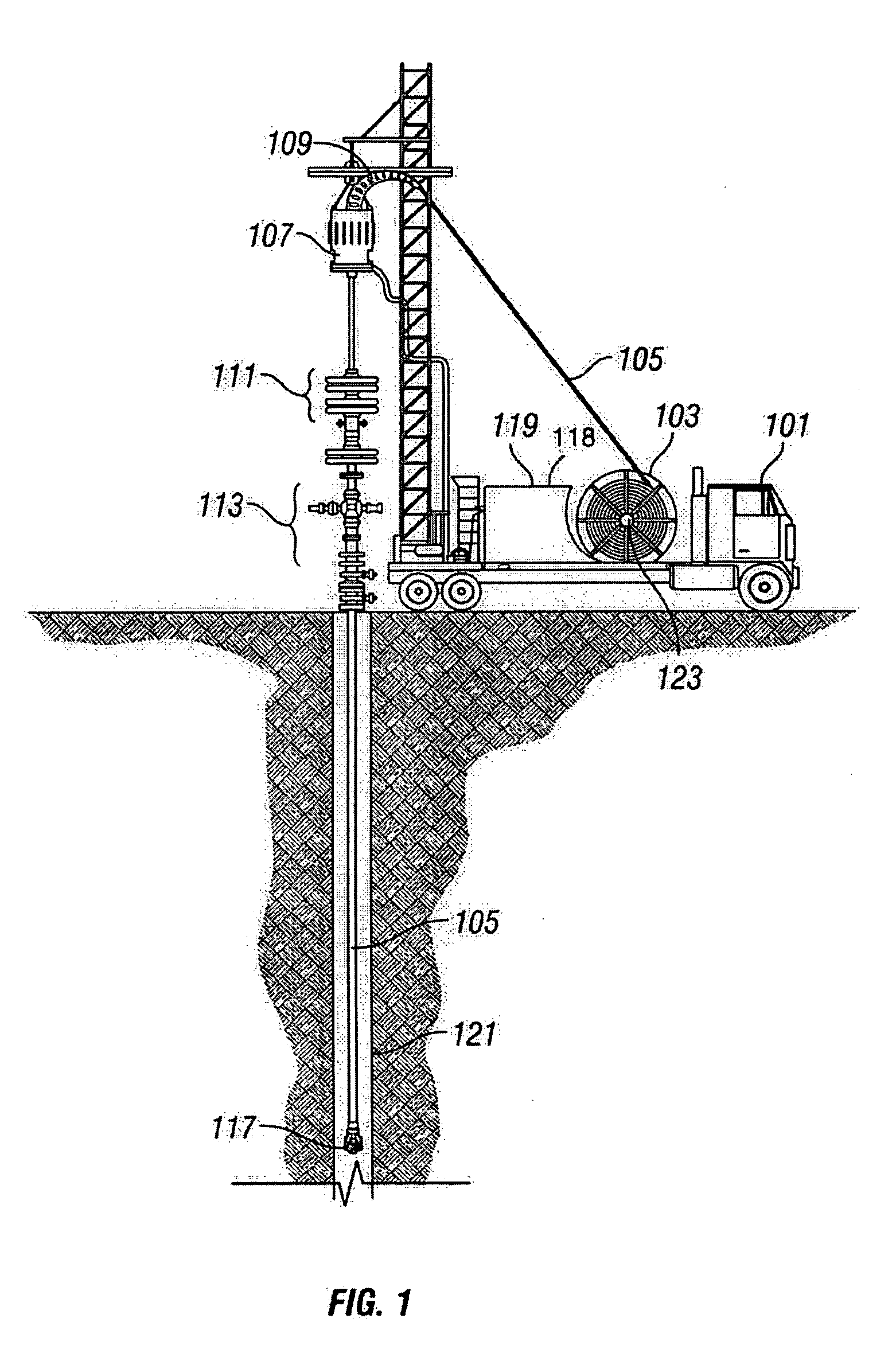System and methods using fiber optics in coiled tubing
a technology of fiber optics and coiled tubing, applied in the field of subterranean well operations, can solve the problems of not always being able to know what the condition of the wellbore is or what, and having no system for direct data communication between the toolstring and the surfa
- Summary
- Abstract
- Description
- Claims
- Application Information
AI Technical Summary
Benefits of technology
Problems solved by technology
Method used
Image
Examples
Embodiment Construction
[0036] In the following detailed description and in the several figures of the drawings, like elements are identified with like reference numerals.
[0037] According to the present invention, operations such a well treatment operation may be performed in a wellbore using a coiled tubing having a fiber optic tether disposed therein, the fiber optic tether being capable of use for transmitting signals or information from the wellbore to the surface or from the surface to the wellbore. The capabilities of such a system provides many advantages over the performing such operations with prior art transmission methods and enables many hitherto unavailable uses of coiled tubing in wellbore operations. The use of optical fibers in the present invention provides advantages as to being lightweight, having small cross-section and provide high bandwidth capabilities.
[0038] Referring to FIG. 1, there is shown a schematic illustration of equipment, and in particular surface equipment, used in a pr...
PUM
 Login to View More
Login to View More Abstract
Description
Claims
Application Information
 Login to View More
Login to View More - R&D
- Intellectual Property
- Life Sciences
- Materials
- Tech Scout
- Unparalleled Data Quality
- Higher Quality Content
- 60% Fewer Hallucinations
Browse by: Latest US Patents, China's latest patents, Technical Efficacy Thesaurus, Application Domain, Technology Topic, Popular Technical Reports.
© 2025 PatSnap. All rights reserved.Legal|Privacy policy|Modern Slavery Act Transparency Statement|Sitemap|About US| Contact US: help@patsnap.com



